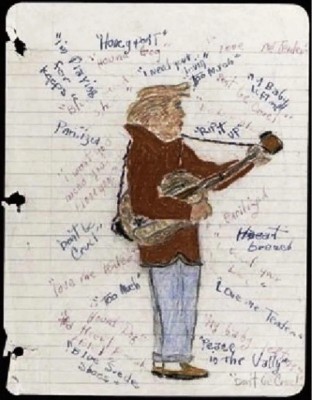Pocahontas: The Historical Truth Behind the Disney Legend
The real story of Pocahontas - the American Legend, her marriage to John Rolfe, and the truth behind the Disney legend.
Table of Contents
- Introduction
- Encounter with the English and the Myth of John Smith
- Captivity and Marriage to John Rolfe
- Life in England and Death
Introduction
POCAHONTAS (c. 1596 – March 1617), whose real name was Amonute and who was also known as Matoaka, was a Native American woman from the Powhatan tribe, which inhabited the area of present-day Virginia in North America. Her life and marriage to English colonist John Rolfe have been recorded in history as a symbol of early contact between Indigenous peoples and European settlers.
Pocahontas was the daughter of Chief Powhatan, leader of the confederation of tribes in the Tsenacommacah region. She was born around 1596, although the exact date is unknown. According to historical sources, she was not a princess in the European sense but had a special status as the favorite daughter of a powerful chief. Her childhood was spent in the traditional environment of the Powhatan people, and her first significant interaction with the English occurred after the establishment of the Jamestown colony in 1607.
Encounter with the English and the Myth of John Smith
Pocahontas became known in popular culture due to the story of saving John Smith, an English captain, from execution in 1607. According to Smith's own version of events, written years later, Pocahontas intervened with her father to save his life. However, historians today believe that this event was likely fabricated or exaggerated, as it only appears in Smith’s later writings and is not supported by other contemporary sources.
Encyclopædia Britannica states that it is possible the ritual Smith described was part of a Powhatan adoption ceremony, not an actual threat of death.
An engraved portrait of Matoaka or Rebecca, the Native woman better known as Pocahontas, was made in 1616 during her stay in England, where she died shortly afterward. It is the only known depiction of her appearance made during her lifetime. It is believed that Simon van de Passe (1595–1647), a Dutch engraver, sketched her likeness during a live sitting and then produced the engraving for the Virginia Company, which used it for promotional purposes. This is the closest we will ever come to knowing what Pocahontas actually looked like.
Captivity and Marriage to John Rolfe
In 1613, during the First Anglo-Powhatan War, Pocahontas was captured by the English under the command of Captain Samuel Argall. She was held as a hostage in Jamestown to ensure peace with the Powhatan and to secure the release of English prisoners. During her captivity, she met John Rolfe, an English colonist and tobacco grower.
Rolfe, a widower, fell in love with her, and Pocahontas, according to sources, converted to Christianity and took the name Rebecca. The marriage between Pocahontas (then called Rebecca Rolfe) and John Rolfe took place on April 5, 1614, in the church at Jamestown. This marriage led to a temporary truce between the Powhatan and the English colonists, known as the "Peace of Pocahontas."
Life in England and Death
After the wedding, Pocahontas and Rolfe traveled to England in 1616 together with their son Thomas, born in 1615. In England, Pocahontas was presented as an example of a “civilized savage” and was received at the court of King James I. However, her health deteriorated, likely due to an unknown illness such as tuberculosis or pneumonia.
She died in March 1617 in Gravesend, at the age of about 20 or 21, while preparing to return to Virginia. She was buried in the Church of St. George in Gravesend, although the exact location of her grave is unknown due to later renovations of the church.
The marriage of Pocahontas and John Rolfe had a significant impact on relations between Native Americans and English colonists, although the peace was short-lived. Her story became the subject of numerous myths and romanticized depictions, but historical sources confirm her role as a mediator and a symbol of cultural encounter. John Rolfe returned to Virginia after her death, while their son Thomas later became an ancestor of many prominent families in Virginia.
Get Free Gifts & Best Stories!
Join our newsletter to get our top stories of the month and free merch.
- 📚 Cool Stories: Read stories you won’t find in textbooks.
- 🎁 Free Gifts: Get exclusive stickers, t-shirts, and more!
Only 1 email a month. No spam, we promise!

